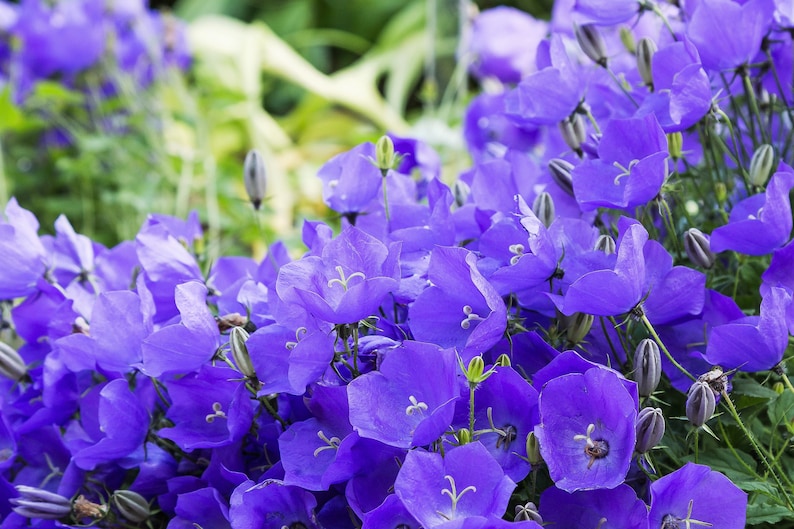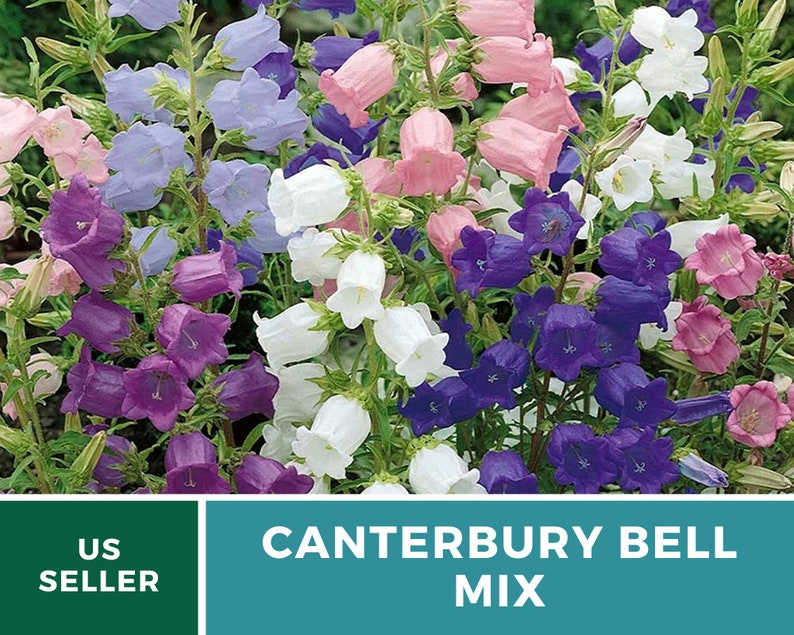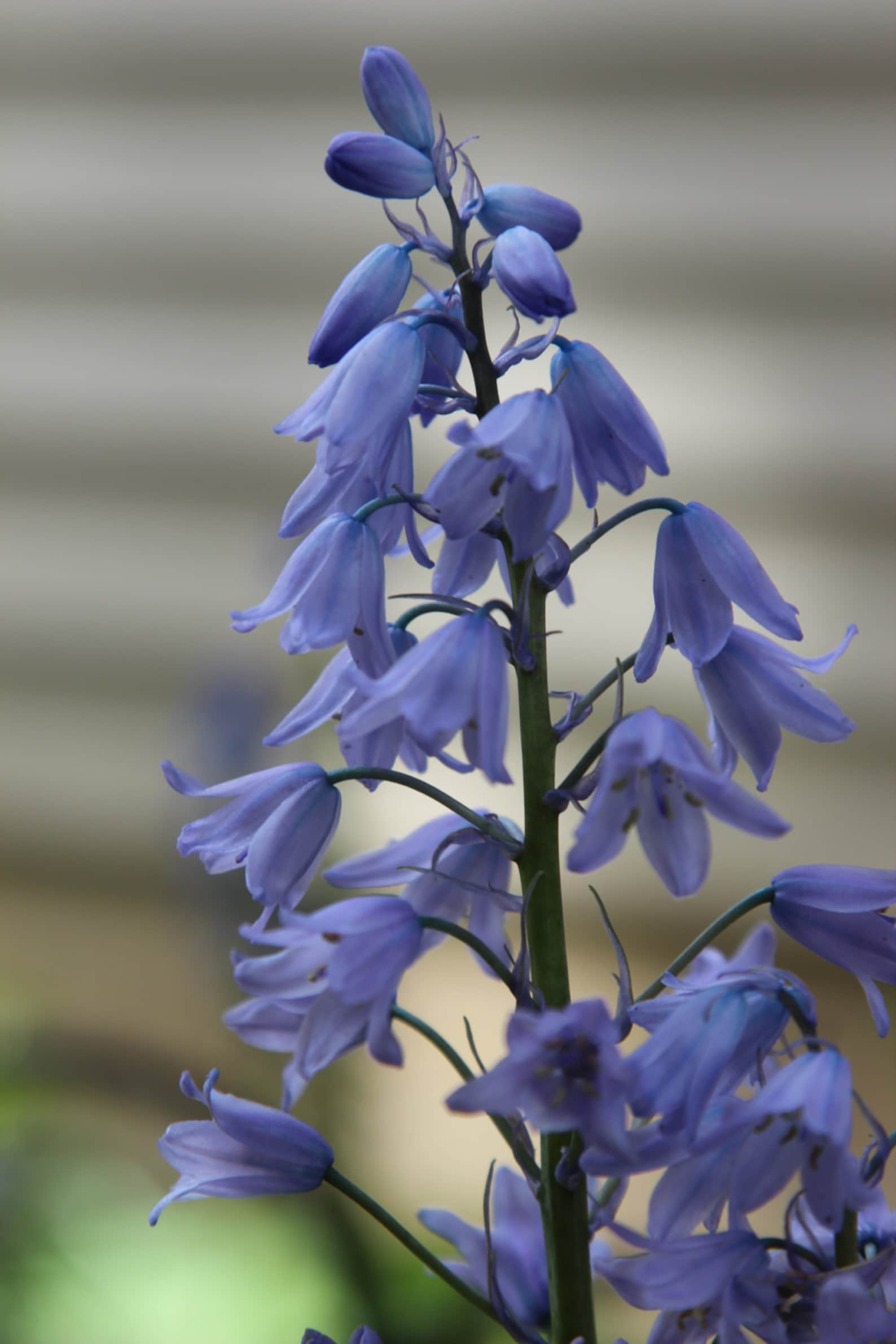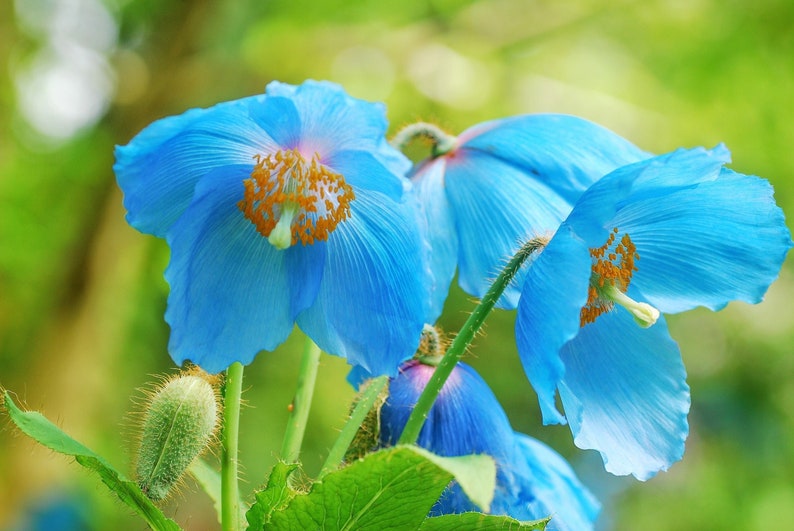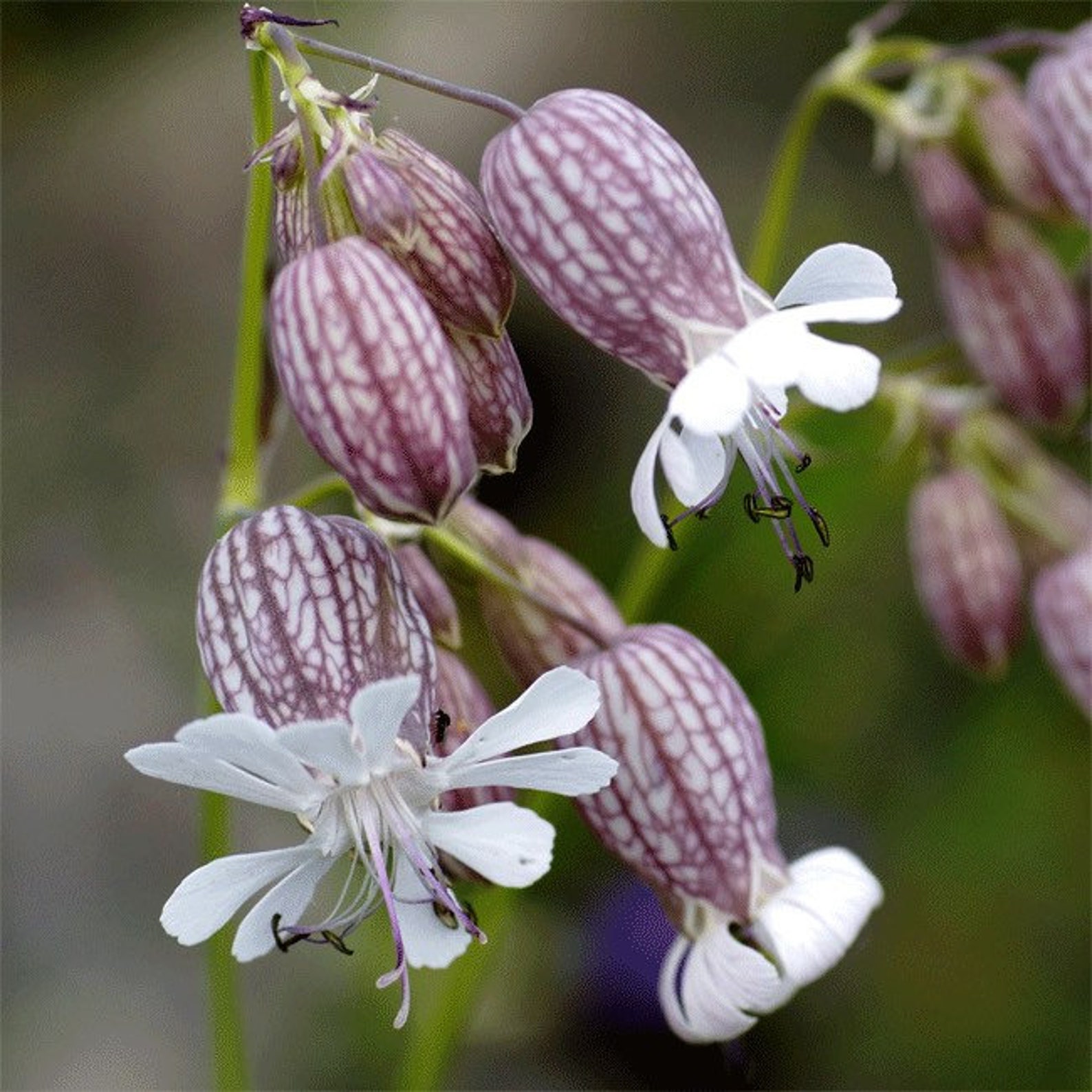Bell-shaped flowers add a unique touch to any garden with their interesting shapes and elegant appearance. They hang gracefully from thin stems, creating a beautiful display.
These flowers come in many colors, making it easy to find the perfect shade to brighten up your garden.
One of the best things about bell-shaped flowers is how easy they are to care for. They thrive with plenty of sunlight and moist, well-drained soil.
Plus, their blooms attract pollinators, which is great for your garden’s health. Whether in garden beds or pots, they look stunning.
I’ve picked out 19 of the most beautiful bell-shaped flowers for you. If you’re looking to add something special to your garden, keep reading to find the perfect one for you.
7 Key Takeaways on Plants With Bell Shaped Flowers
- Bell-shaped flowers are admired for their elegant form and come in diverse colors, adding visual interest to any garden.
- Most bell-shaped plants require minimal care, thriving with sunlight, moist, well-drained soil, and occasional watering.
- These flowers are attractive to pollinators, which can enhance garden productivity and biodiversity.
- Popular bell-shaped flowers include Fuchsia, Bellflower, and Foxglove, each with unique features and growth requirements.
- Some bell-shaped flowers, like Lily of the Valley and Foxglove, are toxic if ingested, so caution is needed.
- Bell-shaped flowers are suitable for various garden settings, including cottage, woodland, and container gardens.
- Many bell-shaped flowers, such as Coral Bells and Japanese Bellflowers, can thrive in containers with proper care.
19 Bell-Shaped Flowers to Add to Your Garden
Bell-shaped flowers bring something special to our gardens. They not only look different but also help other plants around them. Here are 19 bell-shaped flowers that you should think about adding to your garden.
Keep in mind that these are not typical houseplants and some can be toxic, requiring specific care despite their beauty.
1. Fuchsia (Fuchsia spp.)
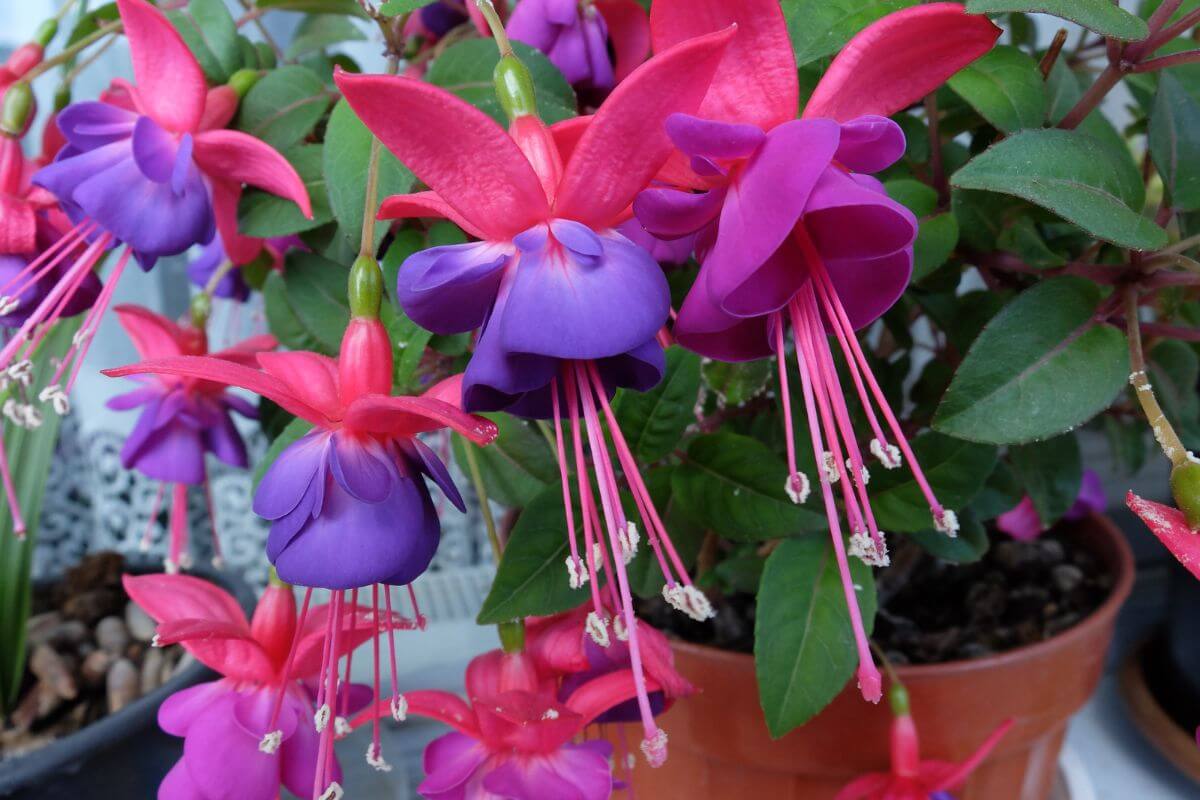
Fuchsias are loved for their bright, drooping flowers shaped like teardrops. They come in many colors, especially red and purple. There are over 100 types of fuchsias, from bushes to small trees, mostly found in South America.
Fuschias love cool and wet places, making them perfect for hanging baskets. Their flowers have four long parts and four shorter ones, usually in colors that stand out against each other.
Hummingbirds love fuchsias and help them make seeds. Some fuchsias, like F. excorticata, can grow tall, up to 15 meters. The fruits of fuchsias are safe to eat, and F. splendens has a taste like citrus and pepper.
2. Bellflower (Campanula spp.)
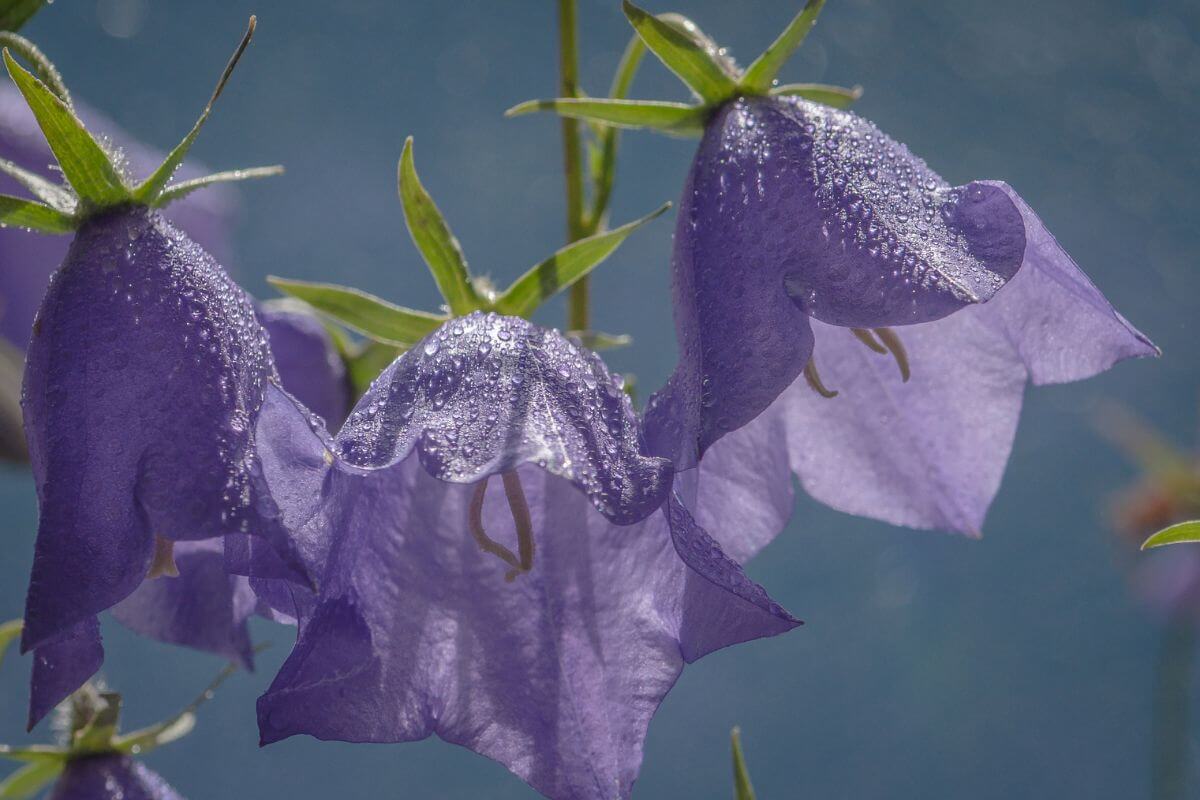
Bellflowers, known scientifically as Campanula, are a diverse group of over 300 species. These plants are loved for their unique bell-shaped flowers, which come in vibrant shades of purple, blue, pink, or white.
You’ll find bellflowers in various forms, from low-growing ground covers to towering border plants. They thrive best in full sun to partial shade and need well-drained soil. However, be cautious with some types, like C. rapunculoides, as they can spread quickly.
The good news is, bellflowers are not a favorite among deer and they draw in pollinators, making them a great addition to any garden.
What’s more, many parts of the bellflower plant are edible. You can toss them in salads or use them as a colorful garnish. Among the different types, the Peach-leaved Bellflower stands out with its stunning blooms and characteristic bell-shaped flowers.
3. Canterbury Bell (Campanula medium)
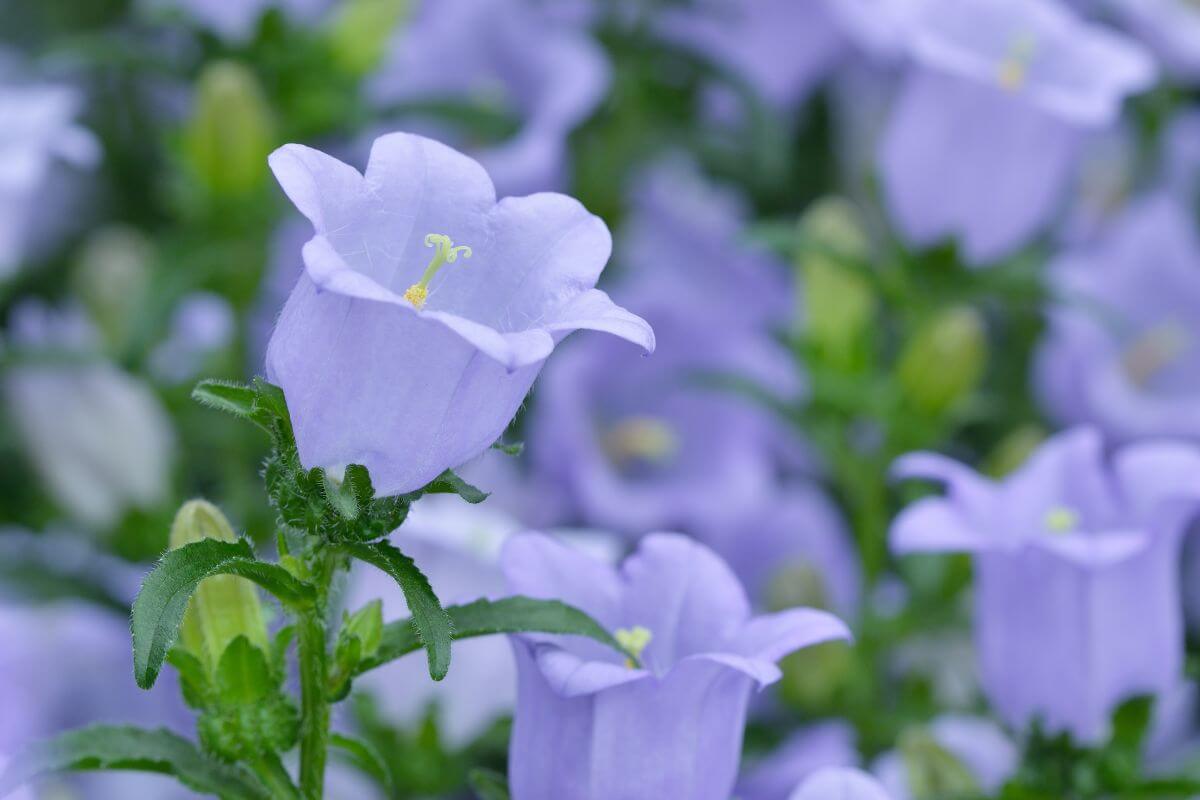
Canterbury Bells are a biennial plant from the Campanula family. They stand out with their big, eye-catching bell-shaped flowers.
During their first year, they grow a circle of leaves close to the ground. Then, in the second year, they shoot up tall stems, reaching up to 3 feet high. These stems are covered with 2-3 inch flowers that come in blue, pink, or white. You’ll see them bloom from late spring to mid-summer. They love being in full sun or partial shade.
Canterbury Bells are perfect for English Cottage Gardens, along borders, and for cutting flower arrangements. They not only add a stunning flower display to your garden but also attract bees and other pollinators. Plus, they often self-sow, meaning they’ll come back in future seasons without you having to replant them.
These flowers create a beautiful scene in any garden, making it a more vibrant and lively space.
4. Lily of the Valley (Convallaria majalis)
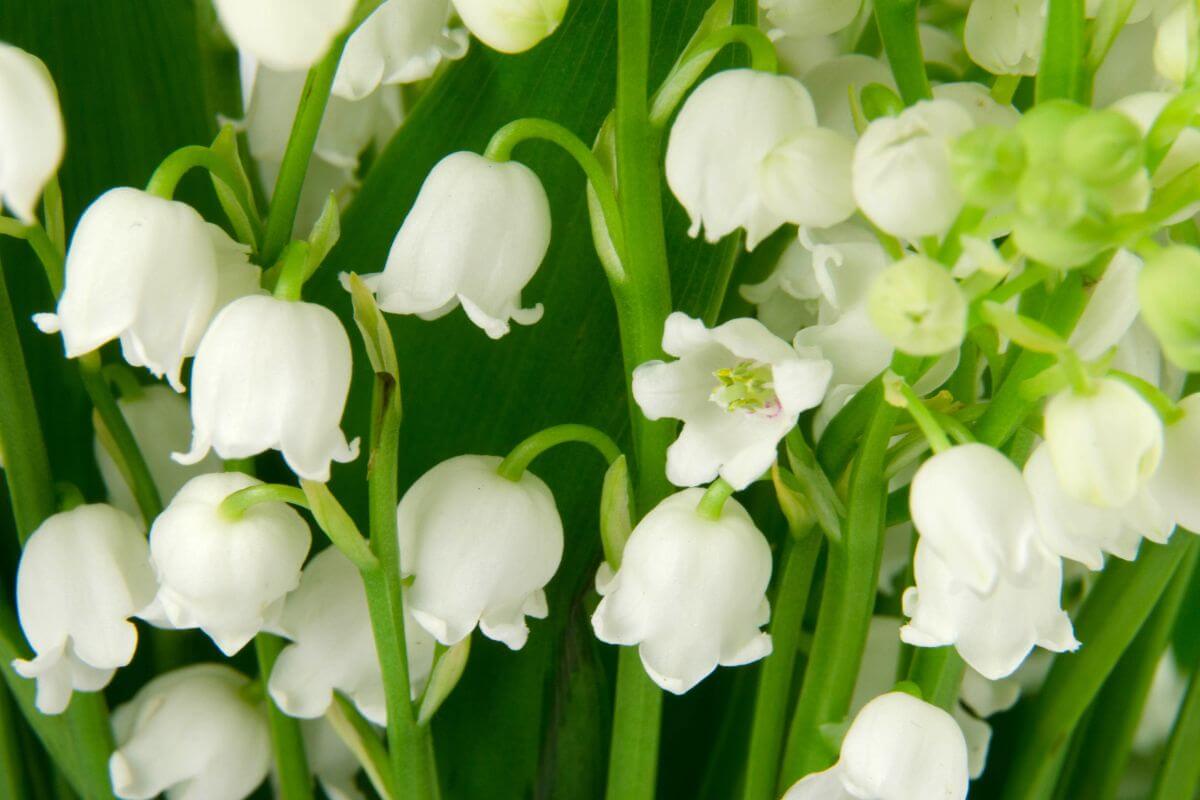
Lily of the Valley is a plant that comes back year after year, famous for its sweet-smelling, white flowers that look like tiny bells and its deep green leaves. It grows by sending out rhizomes, which are like underground stems, and this helps it cover the ground thickly.
Lilies of the Valley bloom in the spring and are a favorite in wedding bouquets because of their lovely scent. But be careful, every part of this plant is very poisonous if eaten.
It loves to grow in spots that are partly shady and in soil that stays moist but drains well. Good news for gardeners with pets, deer and rabbits usually leave it alone. However, it can take over an area quickly because it spreads so fast. This makes it perfect for adding a rich, green carpet in areas that don’t get much light.
5. Coral Bells (Heuchera sanguinea)
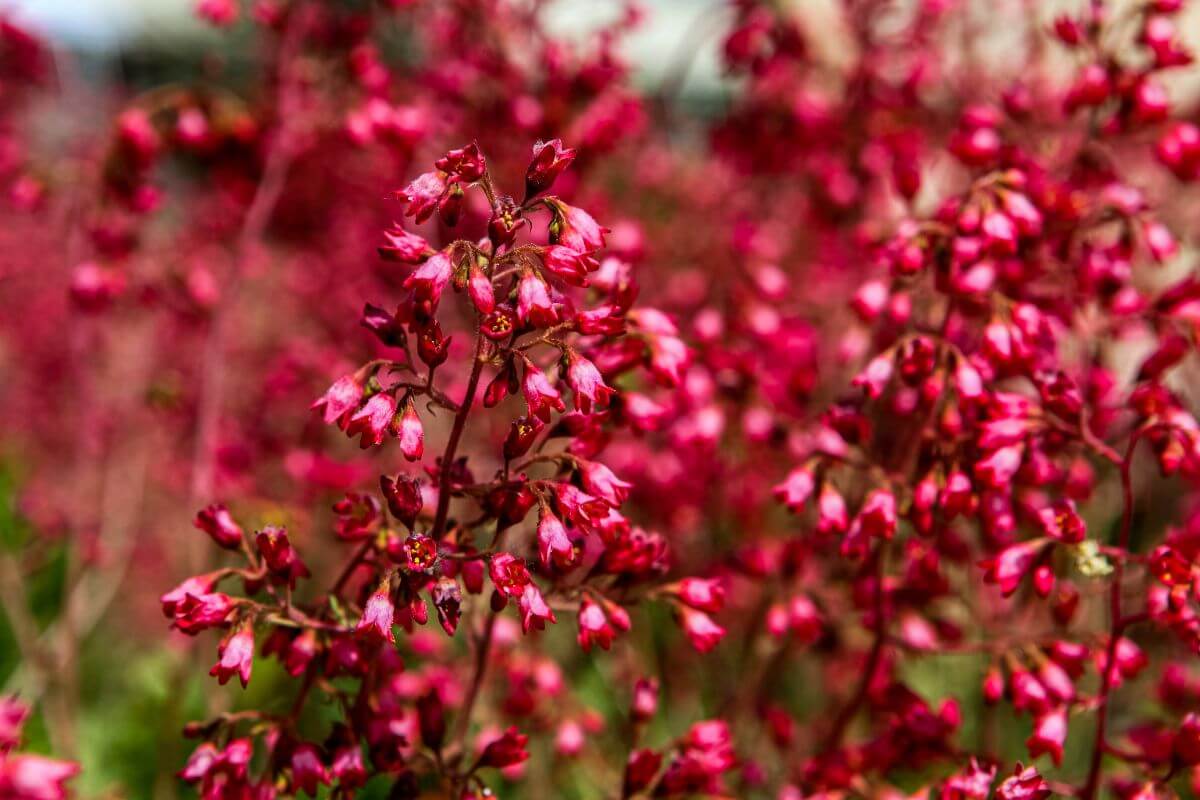
Coral Bells stand out in any garden with their vibrant leaves. You can find these plants dressed in colors from deep purple to bright lime green. They also send up tall stems with flowers that can be white, pink, or red, adding even more interest to your garden.
These plants like to hang out in partial shade and enjoy well-drained soil. They’re perfect for adding life to borders, rock gardens, and containers. If you’re looking for some star performers, check out ‘Molly Bush’, ‘White Cloud’, and ‘Palace Purple’.
One of the best things about Coral Bells? They’re usually left alone by deer and are a favorite spot for hummingbirds. Plus, they don’t ask for much in return for their beauty. Just a bit of division every few years to keep them healthy, and they’re good to go.
If you’re looking to add some easy-care, colorful plants to your garden, Coral Bells with their stunning purple blooms and other vibrant colors are a fantastic choice.
6. Foxglove (Digitalis purpurea)
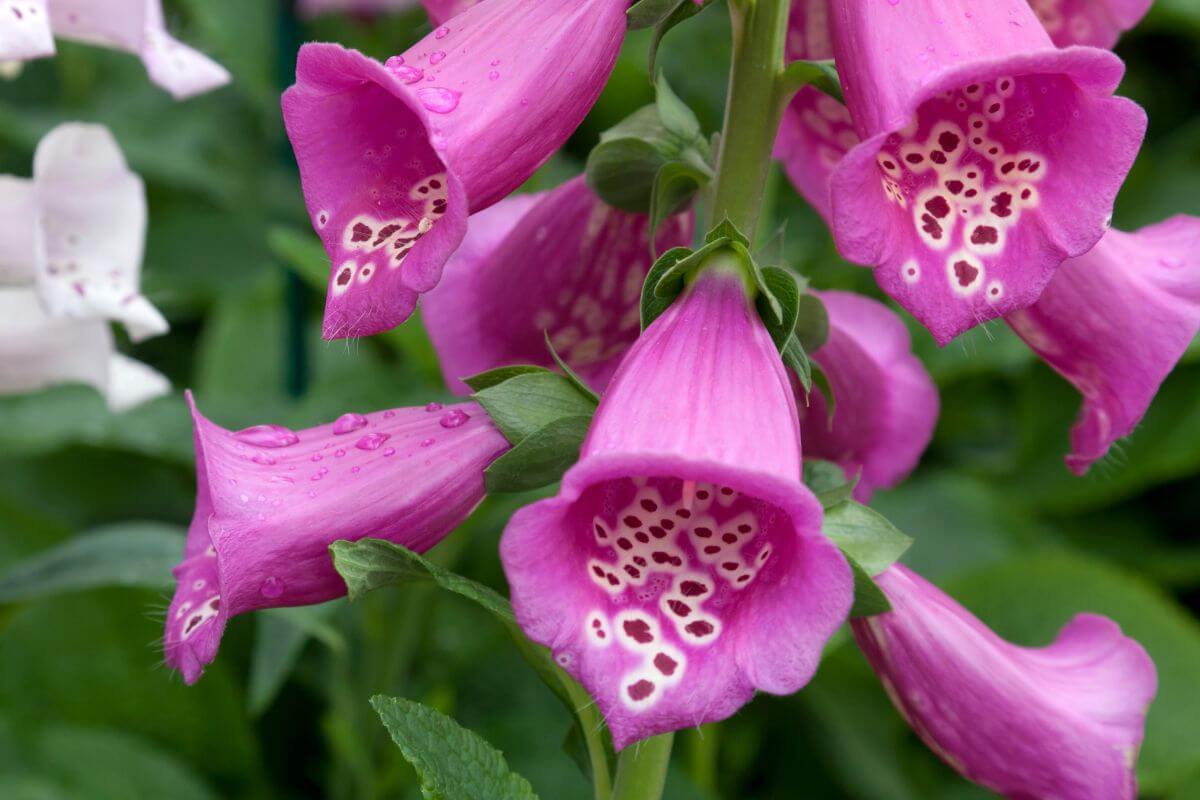
Foxglove is a plant that can live for two years or a bit longer. It’s famous for its tall spikes with tubular, bell-shaped flowers. Originating from Europe, it shows off its blooms in early summer. These flowers come in colors from white to deep purple, often featuring spots inside.
These plants like it when they don’t get too much sun and prefer their soil moist but not soggy. It’s important to note that every part of the foxglove is very poisonous if eaten. Yet, it’s also where we get digoxin, a medicine for the heart.
Foxgloves are perfect for cottage gardens. They draw in bees and hummingbirds and love to plant themselves for the next year. With their unique bell-shaped flowers, they bring a striking look to any garden.
7. Stinking Hellebore (Helleborus foetidus)
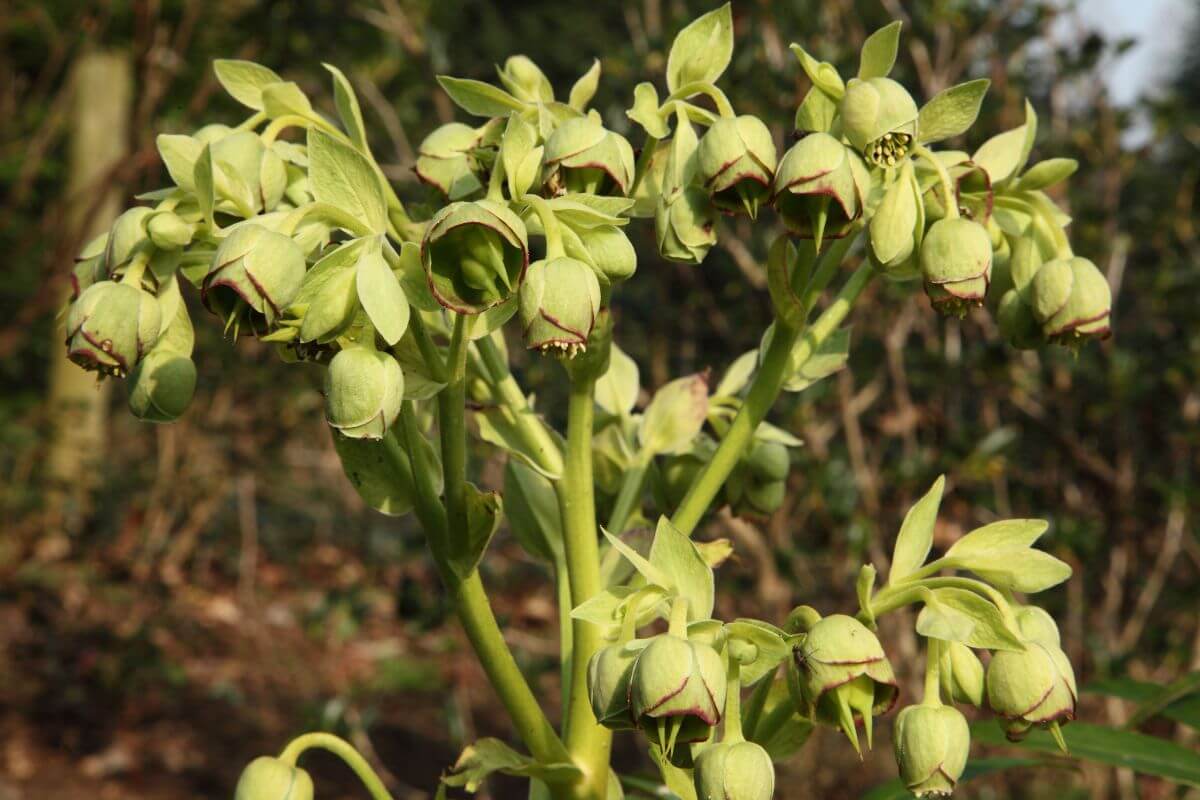
Stinking Hellebore, despite its odd name, is a perennial plant that brings beauty to gardens all year. It has lovely pale green flowers, shaped like bells and edged in purple, blooming from late winter to early spring.
The thing about the Stinking Hellebore is when you crush its leaves, it gives off a smell that some find unpleasant. But don’t let that stop you. This plant is tough. It doesn’t get eaten by deer and loves to grow in spots that are partly shady to fully shady.
Just a heads up: every part of this plant is toxic if eaten. Still, it’s a favorite for adding interest in the colder months and for spreading out naturally in woodland gardens. This makes it a really useful plant to have.
8. Spring Snowflake (Leucojum vernum)
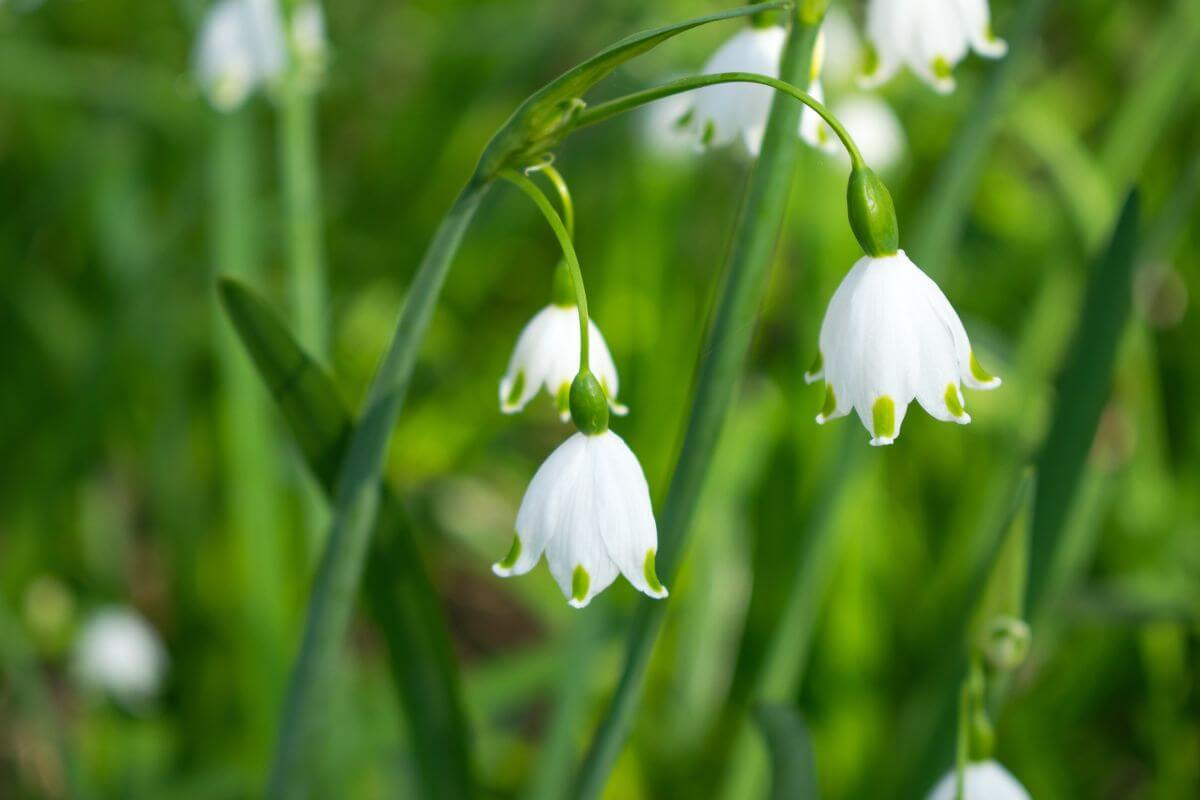
Spring Snowflake is a bulb that comes back year after year. It’s known for its pretty, white bell-shaped flowers with green tips. These flowers bloom from late winter to early spring. This plant comes from Europe and loves to spread out in damp, shady spots in the woods.
It looks like a bigger version of the snowdrop flower. People like to plant it under trees that lose their leaves because it grows well there. It likes a bit of shade and soil that stays wet but isn’t too packed down. Once it’s grown, it no longer needs as much care.
Spring Snowflake bulbs can make you sick if you eat them, so keep them away from kids and pets.
9. Snowdrop (Galanthus nivalis)
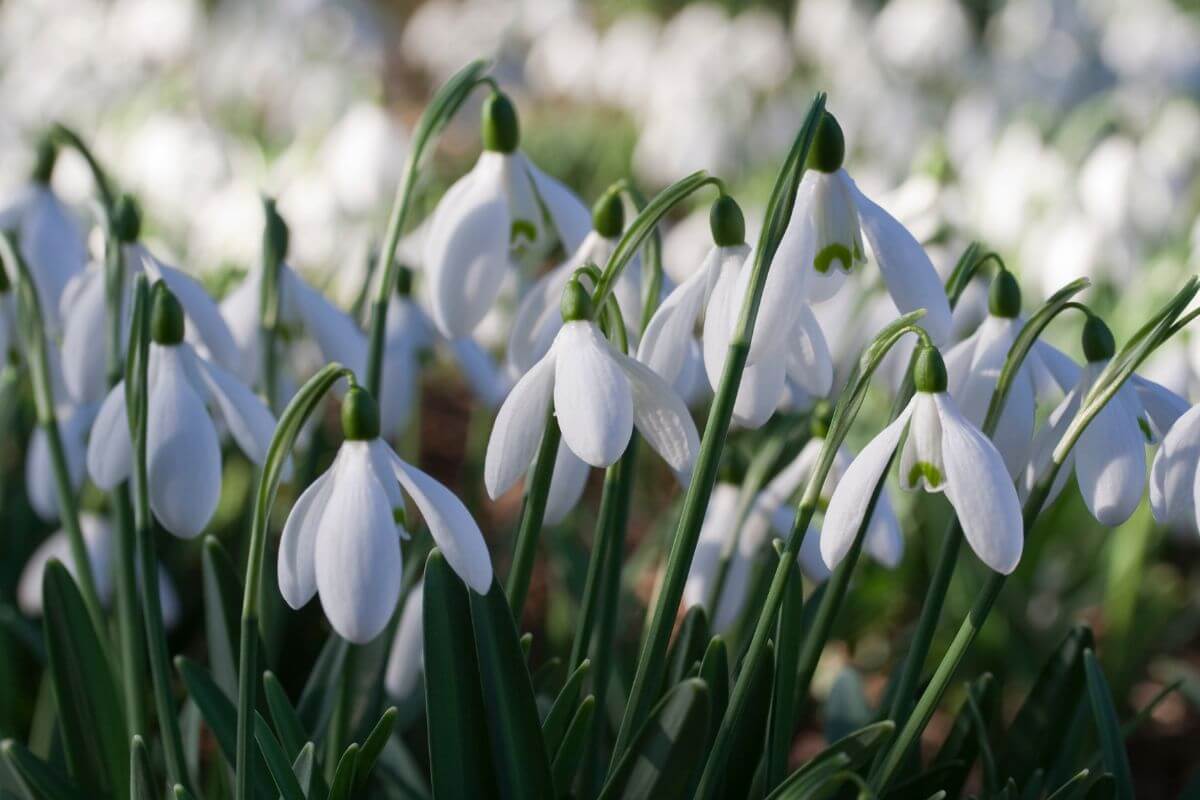
Snowdrops are one of the first flowers to bloom in spring. They often come up through the snow, showing off their delicate white, bell-shaped flowers. These flowers are originally from Europe and the Middle East. Each stem has one flower with three outer petals and three inner petals that have a green mark.
These flowers like to grow in places that are partly shady and in moist soil, drain well, and have a lot of organic matter. Good news for those worried about garden pests: deer don’t eat them. They also spread easily by making new bulbs and by self-seeding.
Snowdrops are a sign of hope and the arrival of spring. However, be careful because they can be harmful if eaten in large amounts. They look stunning in gardens at the start of spring.
10. Angel’s Trumpet (Brugmansia spp.)
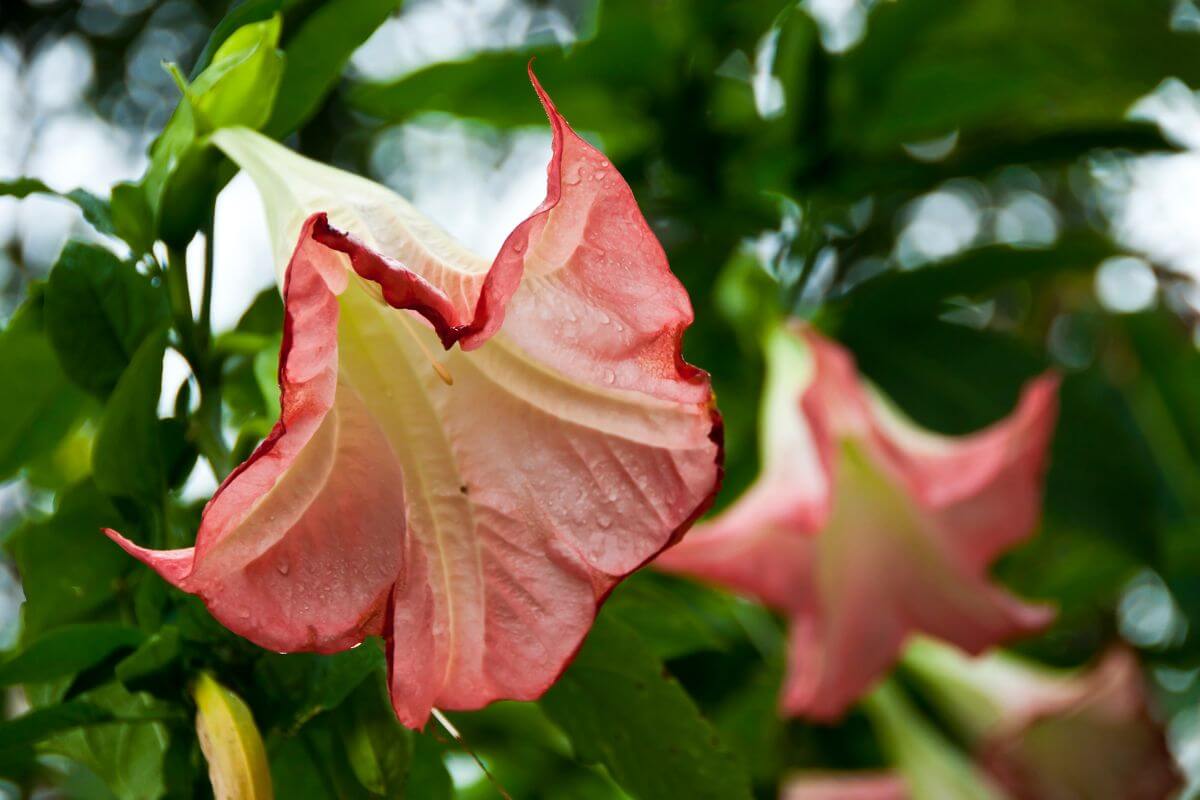
Angel’s Trumpet is a striking plant that can be a shrub or a small tree. It’s famous for its huge, drooping flowers shaped like trumpets, reaching up to 20 inches long.
This plant comes from South America and blooms with fragrant flowers in colors like white, yellow, pink, orange, and red. It loves to soak up the sun but can also thrive in partial shade, given it has rich, moist soil. However, a word of caution: every part of this plant is highly toxic and can cause hallucinations if eaten.
Angel’s Trumpet is a magnet for hummingbirds and moths that fly at night. In cooler areas, people often grow it in pots to enjoy its beauty. The plant’s large flowers, reminiscent of amaryllis, add a breathtaking touch to any garden.
11. English Bluebells (Hyacinthoides non-scripta)
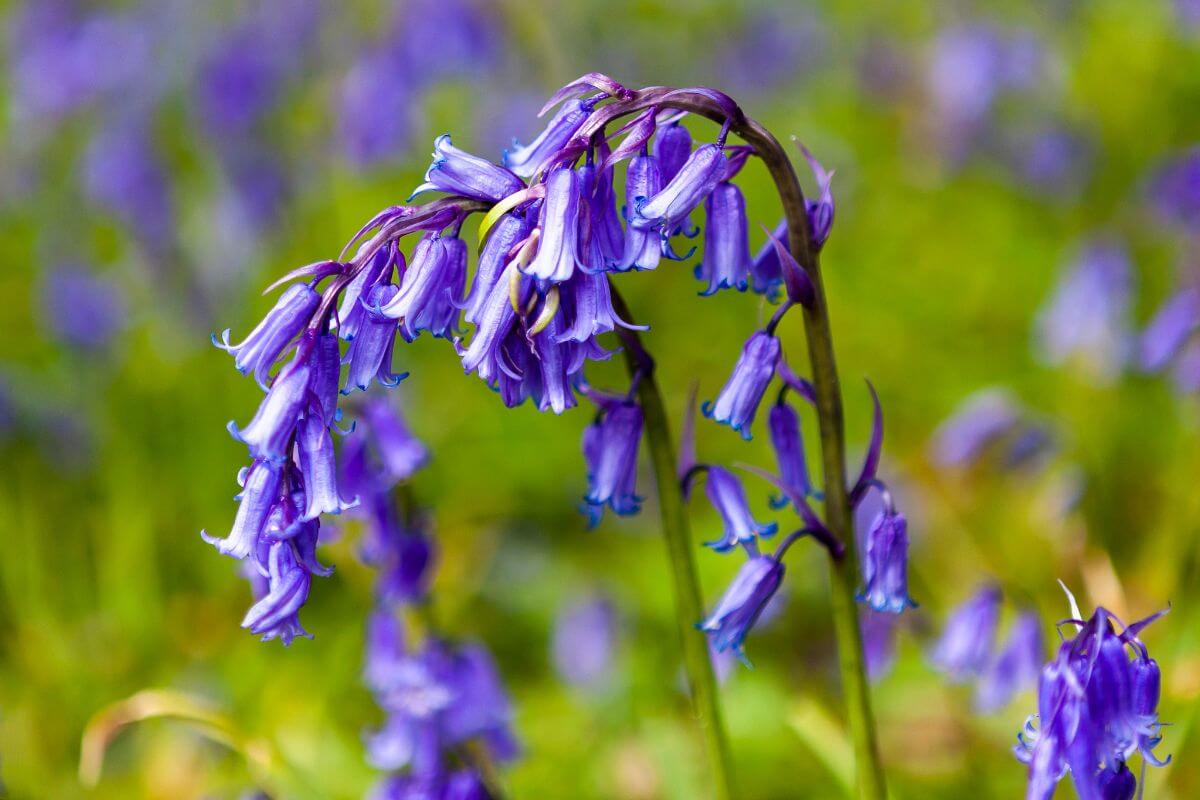
Bluebells are beautiful bulbs that bloom in spring. They have stems that arch and carry fragrant, bell-shaped flowers in a lovely blue color.
These flowers love to grow in woodlands where it’s partly shady and the soil is moist, well-drained, and full of organic matter. Once they start growing, bluebells spread out easily and can cover large areas with their beauty. However, in some places, they can take over too much space, and it’s good to know that their bulbs have toxic glycosides.
12. Virginia Bluebells (Mertensia virginica)
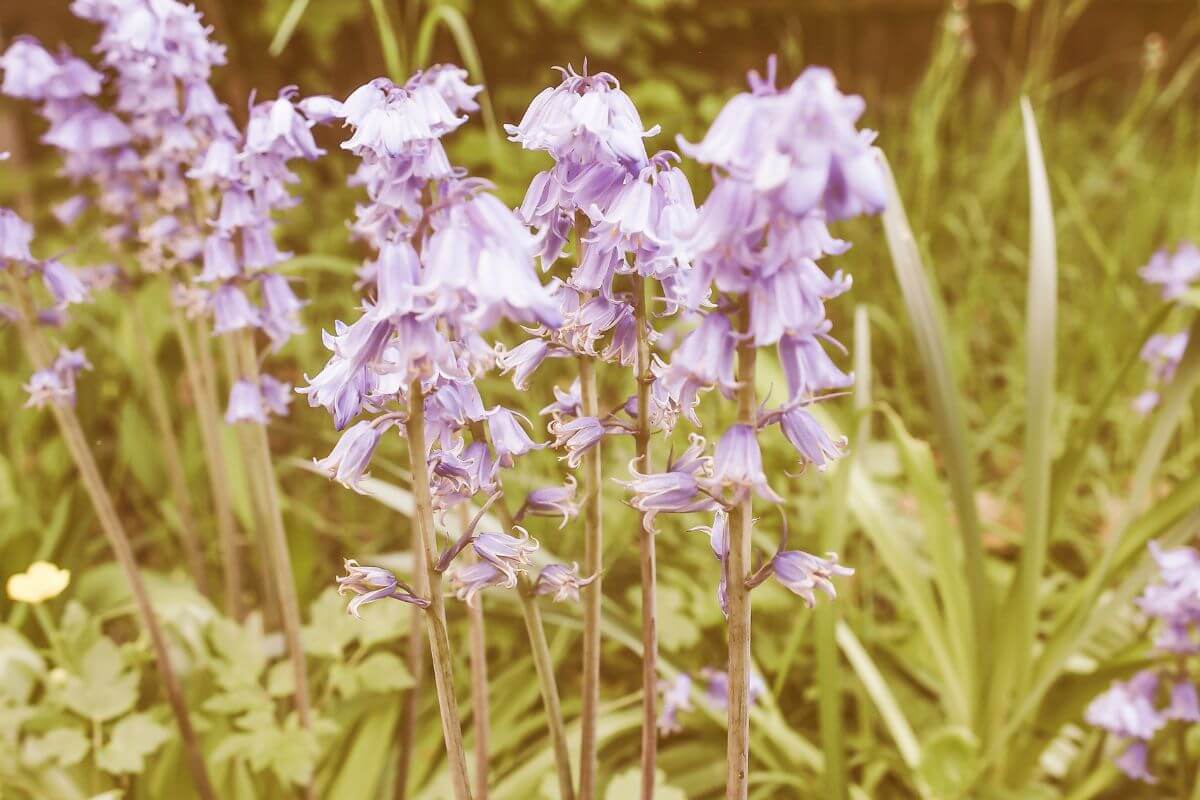
Virginia Bluebells are a beautiful sight in early spring, with their pink buds turning into sky-blue flowers. These wildflowers come from North America and are special because they only last for a short time, with their leaves fading by midsummer.
They love spots that are partly shady and have soil that stays moist and is rich in nutrients. This makes them perfect for woodland gardens and areas where nature takes its course. One great thing about them is that they draw in pollinators early in the season, they’re not tasty to deer, and they grow slowly through a method called rhizomes and by self-seeding.
However, there’s a caution to keep in mind. Virginia Bluebells have a substance called pyrrolizidine alkaloids in them, which can be harmful if eaten in big amounts.
13. Japanese Bellflower (Platycodon grandiflorus)
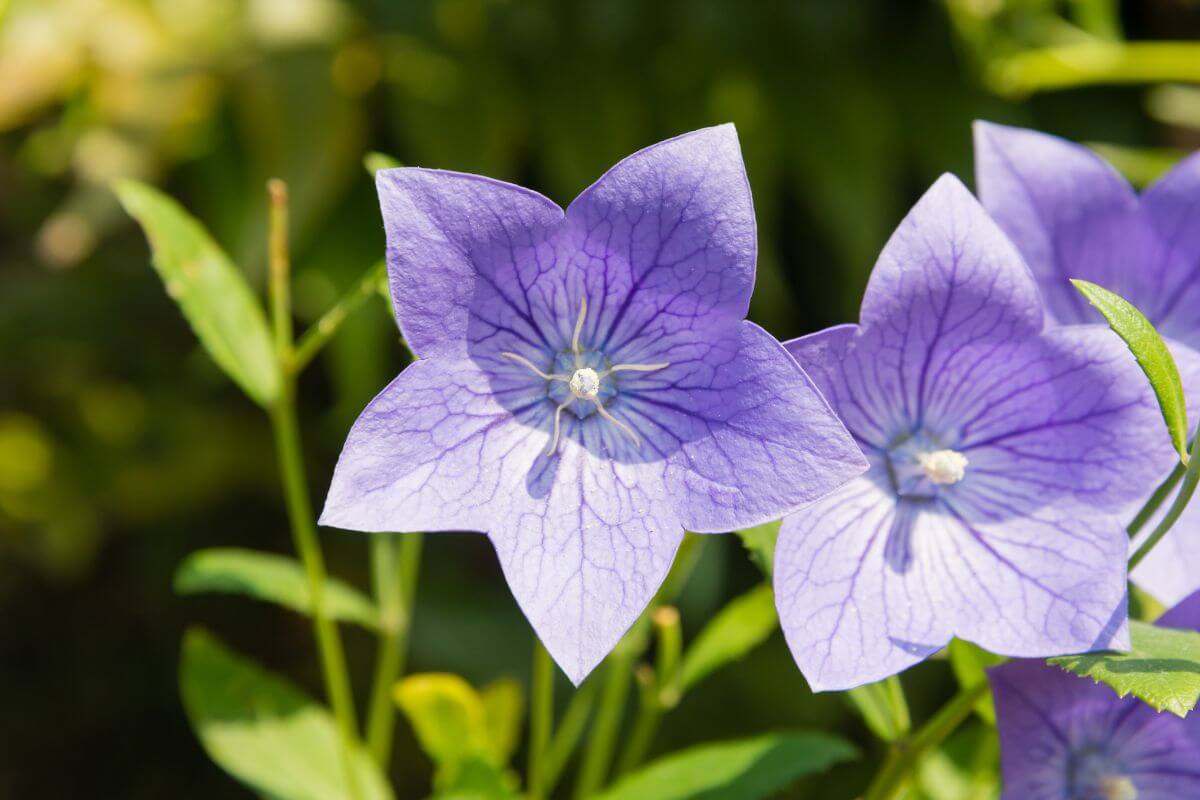
Japanese Bellflower, or Balloon Flower, is a tough plant from East Asia. I love how its buds look like balloons before they pop open into star-shaped flowers. These blooms are usually a lovely blue, but you can also find them in white and soft pink.
This plant does best when it gets full sun or a bit of shade and likes its feet to be dry, so good drainage is key. What I find amazing is that deer leave it alone, and it brings in the bees and butterflies. Plus, it’s super easy to care for.
People have used its roots in traditional Asian medicine, which adds to its charm. It’s perfect for adding a splash of color to borders, rock gardens, or even pots on your patio. If you snip off the spent flowers, it keeps on blooming all summer long.
14. Twinflower (Linnaea borealis)
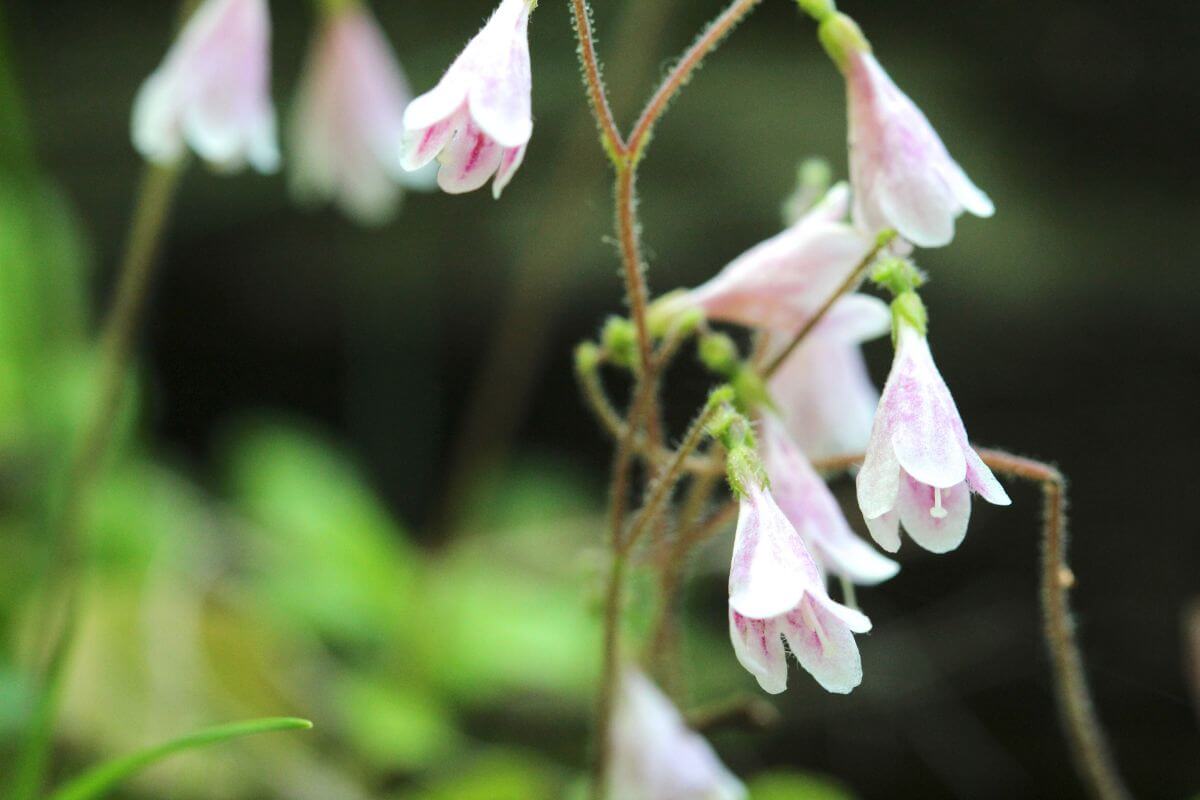
The twinflower or twin flower is a charming, low-growing evergreen plant found in northern forests. It has small, sweet-smelling, pink flowers shaped like bells that grow in pairs on thin stems.
This plant loves to grow in spots that get some shade and prefers acidic soil, keeps moist but also drains well. It’s a perfect choice for covering the ground in woodland and rock gardens, especially in cooler areas.
Named after Carl Linnaeus, who started the modern naming of plants, the twinflower is usually safe from deer and other animals that eat plants. It grows slowly by sending out creeping stems, making it great for areas that look natural.
15. Himalayan Blue Poppy (Meconopsis betonicifolia)
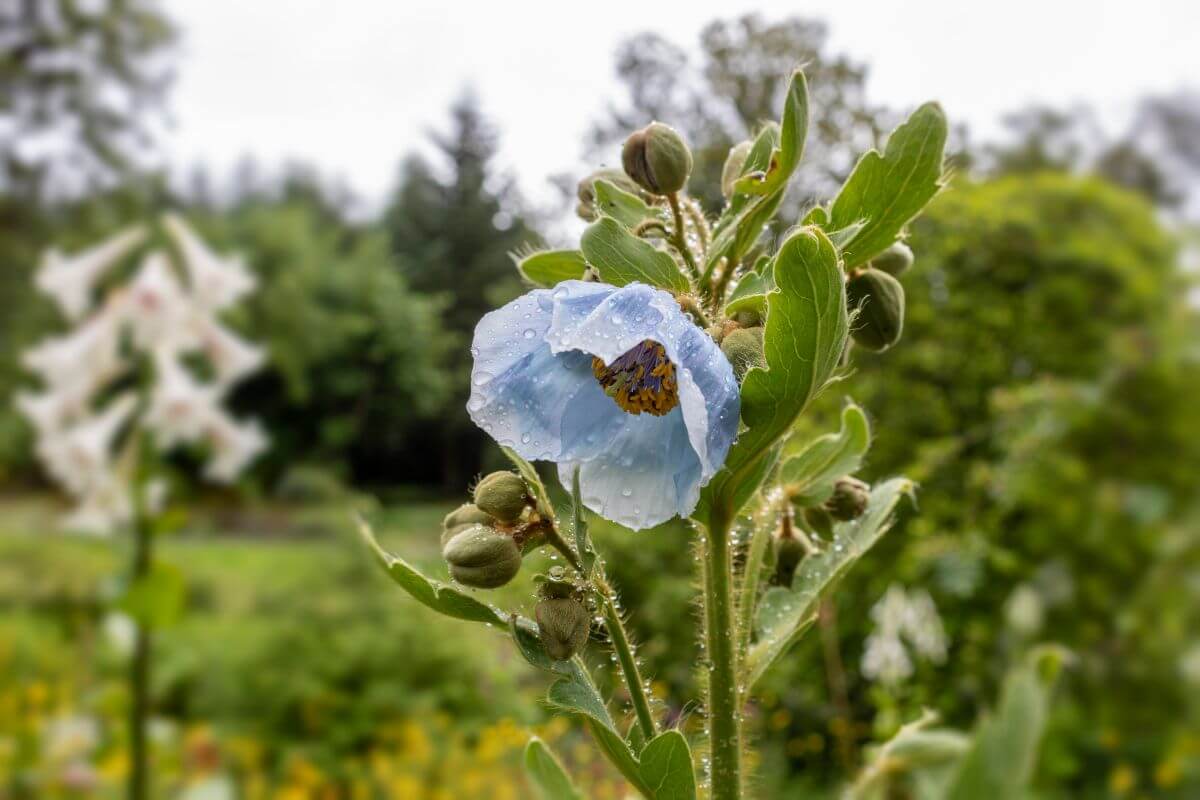
The Himalayan Blue Poppy, known scientifically as Meconopsis betonicifolia, is a stunning flower that brings a splash of sky-blue to gardens. I find its beauty truly captivating. This perennial plant hails from the Himalayas and usually shows off its large, delicate blooms from late spring to early summer.
If you’re lucky enough to see one, you’ll notice the flowers can be quite impressive, reaching up to 4 inches across. However, growing these poppies isn’t for everyone. They love cool, moist places and do best in partial shade. The soil needs to be well-drained and rich in humus. Plus, they need a steady supply of moisture and a break from strong winds.
Despite the challenges of growing the plant, adding a Himalayan Blue Poppy to your garden is worth it, especially in cooler areas. The bright blue color and the plant’s unique charm make it a treasure for those who can cultivate it successfully.
16. Bladder Campion (Silene vulgaris)
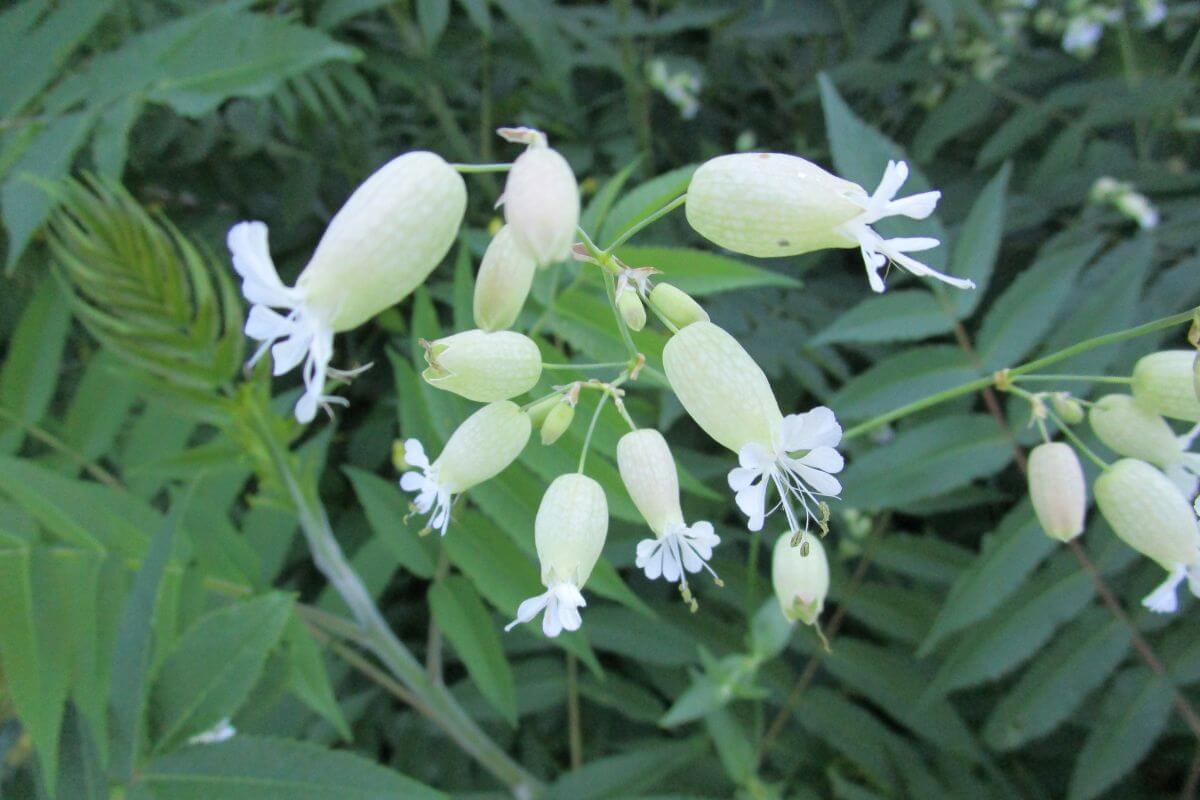
Bladder Campion is a tough wildflower that comes back year after year. It started in Europe and Asia but now loves the gardens of North America too. What makes it stand out are its unique balloon-like shapes that hold tiny white flowers.
This plant loves the sun but can handle a bit of shade. It doesn’t mind dry spells, making it perfect for rock gardens and open fields. Plus, you can munch on its young leaves and shoots. They taste a bit like peas.
Bladder Campion is a favorite among pollinators and doesn’t get bothered by deer or rabbits. But watch out, it can spread quickly in some places because it seeds itself a lot.
17. Bluebell Creeper (Billardiera heterophylla)
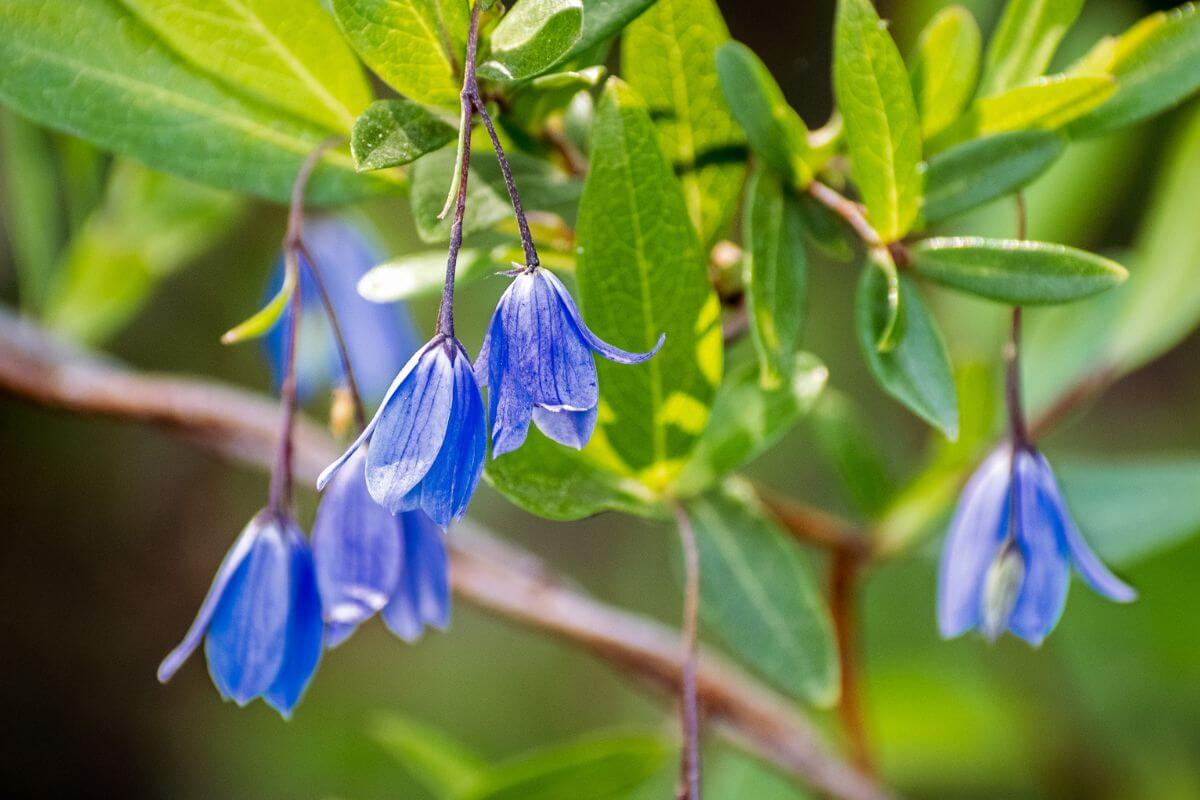
The Bluebell Creeper is a tough yet beautiful plant that originated from Australia. It’s an evergreen climber that loves to show off its lovely blue, bell-shaped flowers. This plant does well in spots that get full sun or just a bit of shade and likes its feet in well-drained soil. After it flowers, it gifts you with edible blue berries.
Once it’s settled in, this plant doesn’t mind dry spells. It’s a magnet for birds and bees, making it a great choice for covering trellises, fences, or even ground cover. While it’s easy to care for, be aware that outside its home range, it can spread a bit too much. A good trim after it flowers helps keep its shape and size just right.
18. Bell Heather (Erica cinerea)
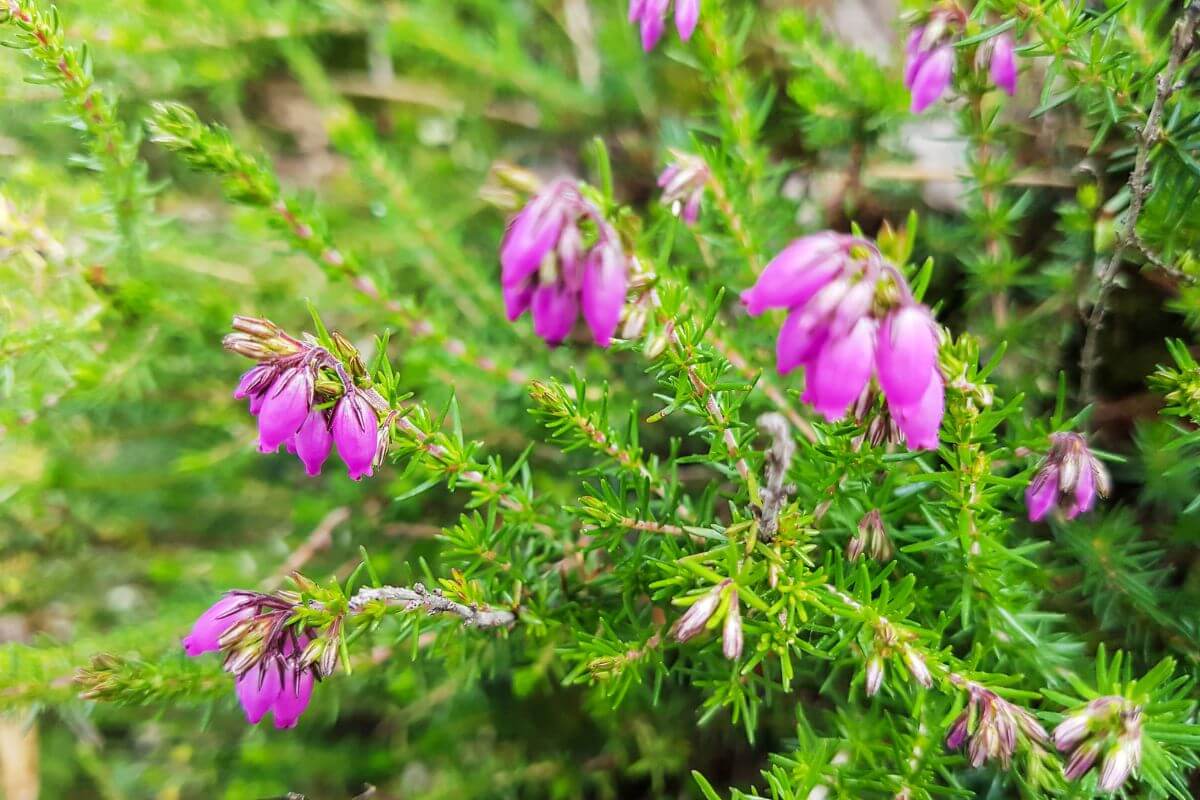
Bell Heather is an evergreen shrub that stays low to the ground. It comes from Europe and is loved for its tiny, bell-shaped flowers that bloom in purple from July to September. This plant does best when it gets a lot of sun and grows in soil that’s acidic and drains well. People often plant it in rock gardens, and heather gardens, or use it as ground cover in places where the soil isn’t great.
What makes Bell Heather stand out is how it handles tough conditions. It’s drought-tolerant, meaning it doesn’t need a lot of water once it’s established, and deer don’t bother it. This plant also attracts bees, which is great for the garden. The care it needs is pretty simple, mostly just a bit of pruning now and then.
There’s an interesting side note about Bell Heather. In the past, people used it in folk medicine to help with urinary problems, but there’s still a lot to learn about its medicinal qualities.
19. Fairy Bells (Disporum spp.)
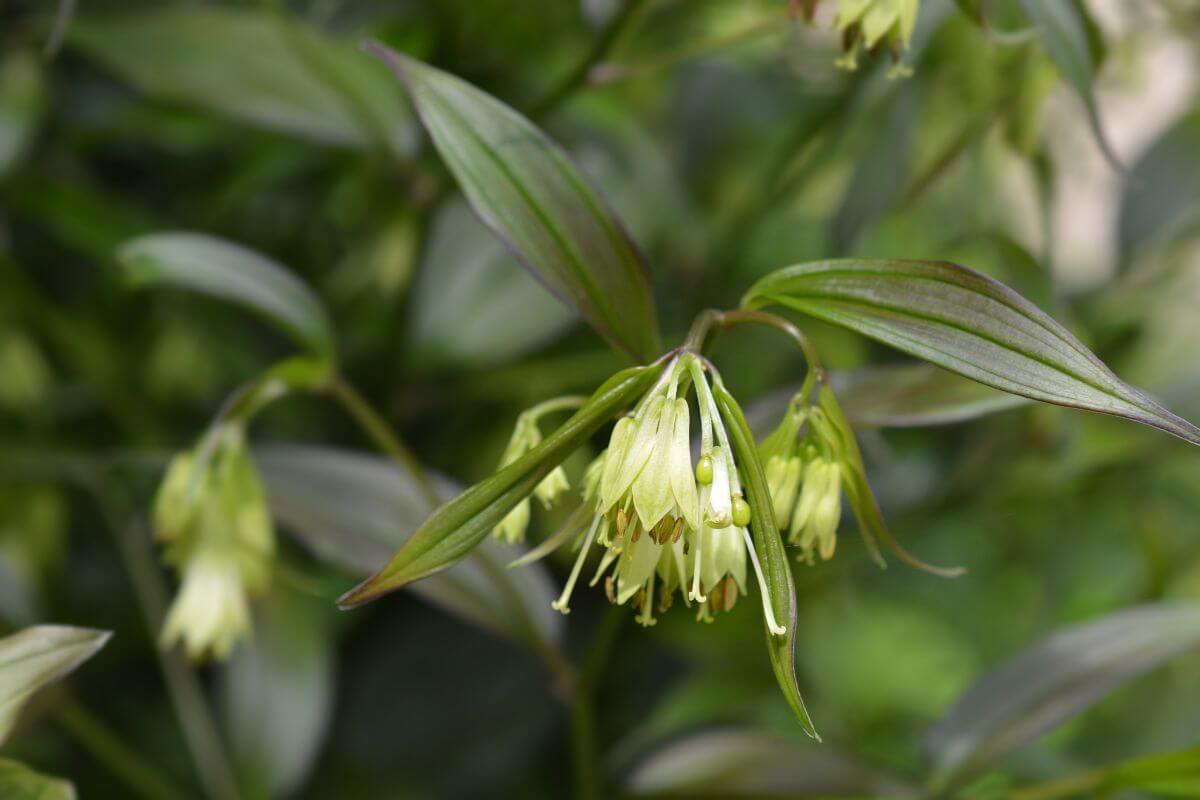
Fairy Bells are special plants from North America and Asia. They have small, bell-shaped flowers that hang down from their leaves. These flowers are usually white or cream.
These plants love shady spots and soil that stays moist but drains well. They do best in soil full of organic matter. Because of this, they’re great for woodland gardens and shady edges. Fairy Bells grow slowly by sending out rhizomes, which means they gradually form clumps. They also produce berries that birds love.
One cool thing about some Fairy Bells, like Disporum smithii, is that their shoots can be eaten. They taste like asparagus. Once they’re settled in, Fairy Bells don’t need much care and deer usually leave them alone. They bring a lovely touch to areas of the garden that don’t get much light.
Plants With Bell-Shaped Flowers Final Thoughts
Bell-shaped flowers can really add something special to your garden. They not only brighten up the space with their colors but also bring in pollinators. This helps all the plants in your garden grow better.
If you take good care of them, these flowers will keep your garden lively for months. Think about planting some bell-shaped flowers. They might be just what you need to make your garden even more welcoming.
Plants With Bell-Shaped Flowers FAQs
1. What Are Bell-Shaped Flowers and Why Are They Attractive?
Bell-shaped flowers are known for their elegant, bell-like form and come in a variety of colors. They add charm and visual interest to gardens and attract pollinators.
2. How Do I Care for Bell-Shaped Flowers?
Provide bell-shaped flowers with sunlight, moist, well-drained soil, and occasional watering. Minimal care is needed, but some may require pruning or deadheading.
3. Which Bell-Shaped Flowers Are Best for Attracting Pollinators?
Fuchsias, Coral Bells, and Foxgloves are excellent for attracting pollinators like bees and hummingbirds due to their vibrant colors and nectar.
4. Are Bell-Shaped Flowers Suitable for All Types of Gardens?
Yes, they fit various garden types, including cottage, woodland, and rock gardens. Choose varieties based on specific light and soil needs.
5. Can Bell-Shaped Flowers Be Used in Container Gardens?
Absolutely. Many bell-shaped flowers, such as Coral Bells and Japanese Bellflowers, thrive in containers with proper drainage and light conditions.
Learn more about beautiful flowers for your garden by checking out these amazing articles:

